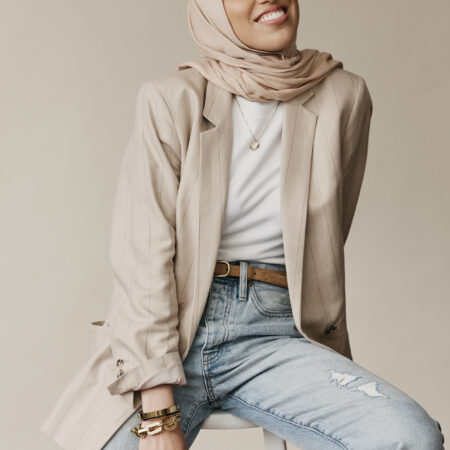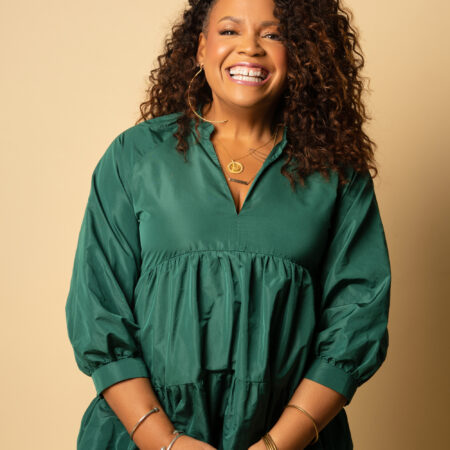Explain your company in one sentence.
We make sure the films that can change the world, do.
Can you explain impact campaigns to someone who may not be familiar with them?
With a powerful piece of storytelling at the center, we set a vision for social change and implement a plan to make it happen. We ask ourselves, “who needs to see this film in order to make a difference.” Sometimes that’s a handful of people in government or a large corporation. Sometimes it’s a particular demographic. Our job is to bridge that gap from story to audience and provide a clear path to take action.
For Dev Patel and Nicole Kidman’s film, Lion, we worked with audiences to raise hundreds of thousands of dollars for missing and vulnerable children in India. With National Geographic’s Science Fair, we organized over 4000 screenings with Junior High and High School kids and engaged over 300,000 kids in STEM. For Nancy Schwartzman’s documentary Roll Red Roll, we concentrated on small screenings and spoke with school sports teams about toxic masculinity. And for Showtime’s doc series The Trade we led campus-wide activations to reduce the stigma of drug addiction.
You were very early to the social impact entertainment space, starting Picture Motion back in 2012. Tell me about the evolution of this space over the last seven years.
We’ve seen a shift in people wanting to be more involved and conscious in everything they do. People want to support brands with a mission, they want to buy products that have a double bottom line, and they want to see documentaries and films that help them explain the world and see it in a better way.
On the distribution side, when we started, self-marketing and self-distribution were just beginning for independent filmmakers. They could use Facebook and social media to market and connect directly with their audiences and Vimeo or VHX to self-distribute films online, bypassing the so-called gatekeepers. When we started working with filmmakers, we were shipping preview DVDs and relying on the organic nature of Facebook to connect with audiences. As we saw the platforms grow, they became the new distributors. Now that there are loads of distributors, our job is marketing and getting audiences to show up to view the content.
...the number one influencer of consumer behavior is someone’s social circle.
Has storytelling always been a part of your DNA? Would younger you be surprised by where you are right this second?
[Laughs] No, younger me would not be surprised. My grandfather loaned me his video camera when I was 12, and I never gave it back. I became our official family documentarian, and every summer, my cousins and I would create our own version of TRL, complete with music videos. If you dredge the internet deep enough, you can find our 2001 season. But, what I might be surprised by is how I ended up more behind the scenes, at essentially a desk job. I couldn’t have dreamed up this job because I had no idea it could exist; it was just a different time. In high school, I had to learn about indie films and documentaries through word of mouth, Blockbuster, and our local movie theater, which I worked at. I also hadn’t yet had my activist awakening and learned the transitive power of story, particularly for progressive change. Given how apolitical I was in high school (I didn’t even vote for the homecoming court), younger me would also be surprised at my penchant for political statement shirts and love of documentary film.
You’ve worked on dozens of powerful films—Knock Down The House, Won’t You Be My Neighbor, The Tale, Gender Revolution, to name a few. As a brand, you’re a convener. Picture Motion is hired to bring people together. Talk about that process. How do you find the right audience? What makes people show up or take action?
We start by asking questions, and the first question is always WHY: Why should someone show up? Why this film? Why right now? Since we are competing with Instagram, ‘90s nostalgia TV, and Twitch, we better have a darn good answer. And that answer becomes our North Star. Once we have the why, then we determine who helps fulfill it: Who has the power to enact that change, and how do we engage them? A majority of our work is built on people showing up to a physical location, sitting close to people they may or may not know, and not looking at their phones for 90 minutes. That is a massive ask. To ask people to give us—or more specifically, give these stories—their time and attention, we need to work for it. So what gets people to show up? Ensuring the right people were reached with the right message at the right time. And what gets them to take action? We leave that to the story. If done right, the film will move someone to think deeper, engage more, and hopefully, take action. Our job is to give them actions and opportunities once the film ends.
Shop Christie Marchese's Wishlist
The last two years have been turbulent globally, politically, and socially. What have you noticed about bringing people together during this time? What does it take to get people on the opposite sides of the spectrum in the same room and willing to have an open dialogue?
We’re all more similar than we are different. While Fox and Facebook have manipulated and misinformed, we’ve found that most people’s political and social beliefs are based on personal experience. If we can get them in a room together to connect on a personal (not political rhetoric) level, we can see a shift in perception that might manifest in an altered position. We saw this with the events we did for JR’s living mural on gun violence with TIME magazine, where members of the NRA conversed with mothers who lost children to gun violence. It’s difficult for us to know if and how the cumulative of those conversations will affect legislation, but it’s a step. What it actually takes to get people in that room is a lot of hard work and hand-holding, plus skills with amplification, storytelling, and press to make a movie a moment everyone wants to be a part of. That said, there are some people who just will never come to the theaters or host screenings of our films and those who will troll our nonprofit partners on Twitter. We’re not trying to take everyone from 0 to 100. I do worry about the algorithms of today’s platforms that reinforce this distance. Have you ever had someone stay in your home and use your Netflix, and the next time you turn on the TV you’re being served all sorts of random shows? That’s a computer telling you to keep watching things you already like, to reinforce what you already are interested in. I worry that computerized curators will prevent people from experiencing new stories. But, we also know that the number one influencer of consumer behavior is someone’s social circle. So our job is to empower people to be curators, to bring the films we represent to their corner of the world.
Community is a big buzzword these days. What do you think people are craving when it comes to getting together?
I think “community” is an overused word in marketing to connected people via shared physical traits or broad interests. I’m interested in connection and understanding and in creating spaces that enable people to interact in the real world. For me, watching a film together creates an instant common ground, and watching together in a physical space (rather than your phone) catalyzes that connection. I don’t need to create a community to meet our ultimate goal, which is connection and action. Social interaction is what leads to social action.
What is the biggest misconception people have about what you do or about the film industry?
On the distributor side, we consistently see the misconception of what impact strategy work is; many see nonprofits as amplifiers and promoters and believe if they help the film do well, the general public awareness will trickle down to dollars and love for these organizations. But it’s the opposite. If more distributors collaborate more deeply with impact strategists and leaders in these organizations to devise a strategy to help the issue through the film, then there will be organic word of mouth, online engagement, press attention, and, ultimately, audience attraction. This is even more important if the distributor cares about brand affinity.
A second misconception is that documentaries are for older people, which is just not true. Young people more than anyone get real content—Snapchat and Instagram Stories are essentially real-time documentaries! And the reason for young people loving documentaries is that never before has the world been more connected, visible, and seen. As humans, we are hard-wired to process life through stories. Documentary film enables us to process this world. It’s our modern campfire. Additionally, facts today are disputable because we believe they’re acquired from sources with their own agendas and delivered through news and social media filtered for profit. We don’t trust facts. But we can’t dispute someone’s life story or human experience, because it’s their truth. When we watch that someone’s story in a film, we understand ourselves better, as well as process the complicated issues our world creates.
“Community” is an overused word in marketing. I’m interested in connection and understanding, in creating spaces that enable people to interact in the real world.
If you were starting your business today, what would you do differently?
Spend more time getting to know the incredible people in the impact film space. I was so heads down at the start and myopically focused on the clients and the campaigns that I didn’t take the time to really get to know the trailblazers and leaders in the space. I could have learned a lot from them much earlier on.
What’s a bad habit you’ve had to break on your entrepreneurial journey?
Not delegating enough. I still have a bad habit of just saying “I’ll handle it” when I really shouldn’t, and we’re probably worse off when I do.
What’s your process for working on yourself while building a business?
First, I have an incredible business partner. Second, I don’t work on Saturdays. I’ll stay late on Fridays and clean out my inbox on Sundays, but I need one full day to use my brain differently. Third, I’m constantly in learning mode. I think Picture Motion grew out of curiosity: Can we do that? And answering the question with: “Why not? Let’s try.” So I read books, listen to podcasts, and consult my extremely talented and badass lady-founder friend group. Every girl needs one. Through that group, I get to both work on myself and learn how to build a business.
What productivity tool would you be lost without?
My calendar. If it’s on my Google calendar, I’ll be there. And now I just told you how you can punk me.
What’s your favorite female-founded product?
I’d be lost without Rent the Runway and my stack of Wildfang tees.
How can someone invest in you and/or the women in your industry?
Theatrical distribution is primarily run by men. We want to change who the cultural curators are, so we’re launching a new type film distribution company to address America’s theater desert problem. Stay tuned! You can also become an executive producer on a film directed by a woman; especially, if it’s her first film. We need more women behind the camera, being the lens through which the world sees stories.






